A brainchild of the late 1990s and the early 2000s, the K23B “Stubby” short-barrel-rifle by the late Olympic Arms firm was aimed at a very specific, very restricted market – and yet, it was ahead of its time in terms of what a “micro AR-15” should be
Before it ceased operations on a fateful February day in 2017, Olympic Arms, Inc.—headquartered in Olympia, WA—was known as a prime manufacturer of AR-15 variants for the civilian and law enforcement markets. Established in 1982 as the brand under which Robert C. Schuetz of SGW (Schuetzen Gun Works) manufactured and sold AR-15 derivatives, Olympic Arms established itself as an innovator. It was the first to offer free-floating aluminum handguards or pistol caliber conversions for America’s rifle; they were also the first company to experiment successfully with a redesigned upper receiver that would integrate a recoil buffer over the bolt carrier group and barrel, allowing an AR-15 to be equipped with a side-folding stock — or none at all.

Olympic Arms was also one of the first-ever manufacturers of AR-15 pistols: indeed, the aforementioned top recoil buffer allowed its OA-93, OA-96, and OA-98 pistols to do without a buffer tube behind the lower receiver. While that system did provide the basis for a good, super-compact, short-barrel rifle (the OA-93 TCP, with a side-folding stock and a 6.5-inch barrel), Olympic Arms would indeed go on to develop an SBR based on a standard AR-15 layout.
ENTER THE “STUBBY”
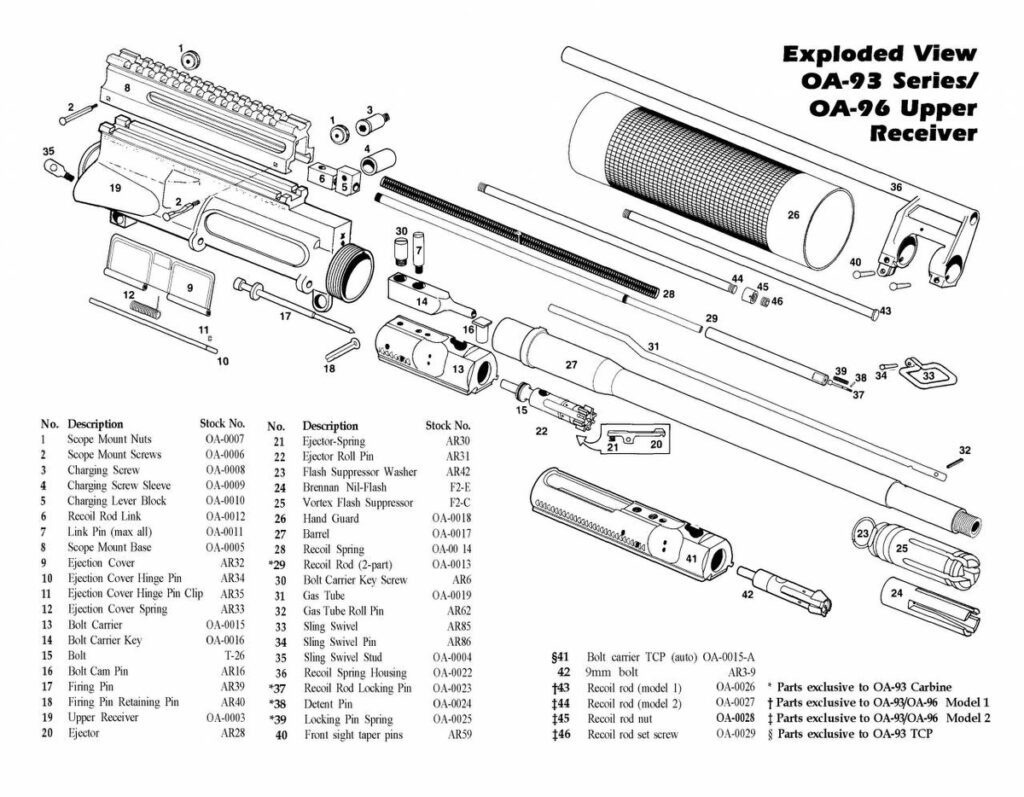
The reason why Olympic Arms decided to follow that road when they had a bufferless design (arguably better, albeit with room for improvement) already in production; given the short barrel length, which would make it subject to the provisions of the National Firearms Act, the 1994 assault weapons ban that was in effect back in the day was likely not a factor in the decision.
It’s more likely that the company decided to market a product that would be more appealing to military, law enforcement, and government customers by providing prompt drop-in compatibility with pre-existing, select-fire M16 or semi-automatic AR-15 lower receivers for entry/CQB operations or for close protection details. And indeed, Olympic Arms was offering 6.5-inch BBL drop-in uppers to MIL/LE customers as early as 1998.
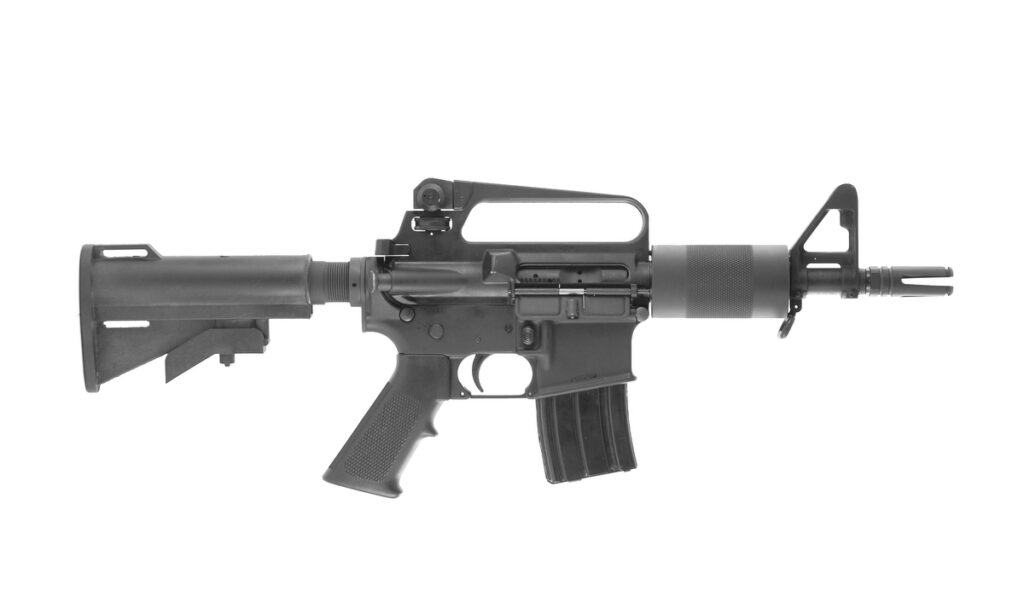
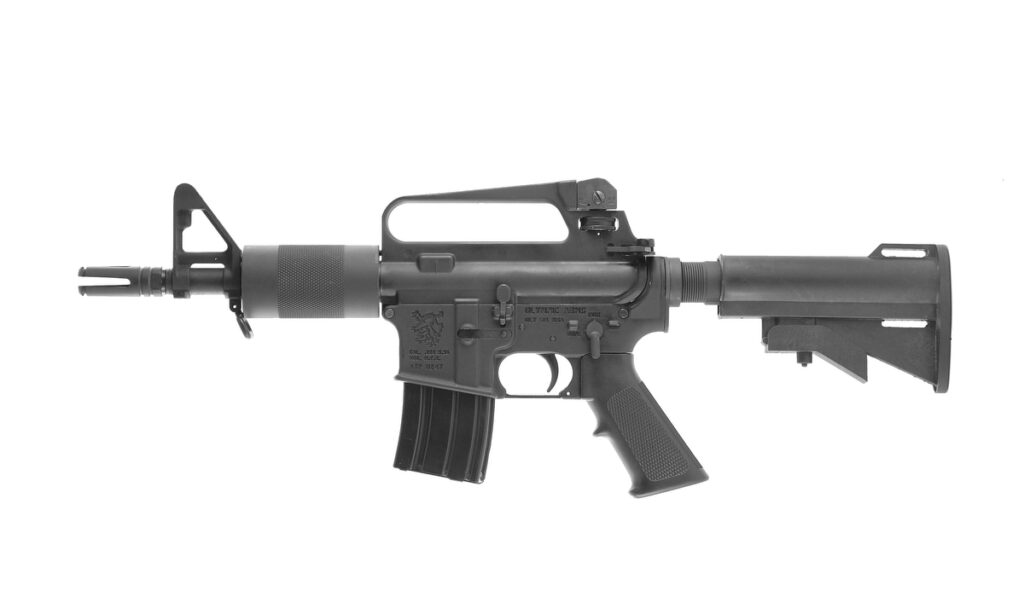
The first factory complete SBRs based on those uppers would be launched circa 1999, dubbed the K23B “Stubby”. Built around an Olympic Arms MFR lower receiver with standard controls and chambered in 5.56×45mm NATO, the Stubby was by no means the first “micro M16” to hit the global markets – products such as the La France Specialties M16K and the M2 Corp. M16C, M16X, and M16SP had been around for a while, and that’s not mentioning Colt’s early Model 607 carbines dating as far back as 1965 – but it was definitely one of the shortest-barreled to be produced in quantities that could be considered “significant” by any standard, and was very shortly followed by other very similar competitors such as the DPMS “Kitty Kat.” For all intents and purposes, the K23B Stubby did pave the way.
SHORT AND BRUTAL
The Stubby featured an A2 upper receiver with a 6.5-inch cold-hammer forged barrel, a Smith Enterprises Vortex flash hider, an A2-style front sight equipped with a front sling swivel but no bayonet lug, and a free-float cylindrical aluminum handguard that was a short version of the version used by Olympic Arms on their line of match-grade AR-15 variants. As such, the K23B does not feature a delta ring, nor a handguard cap.
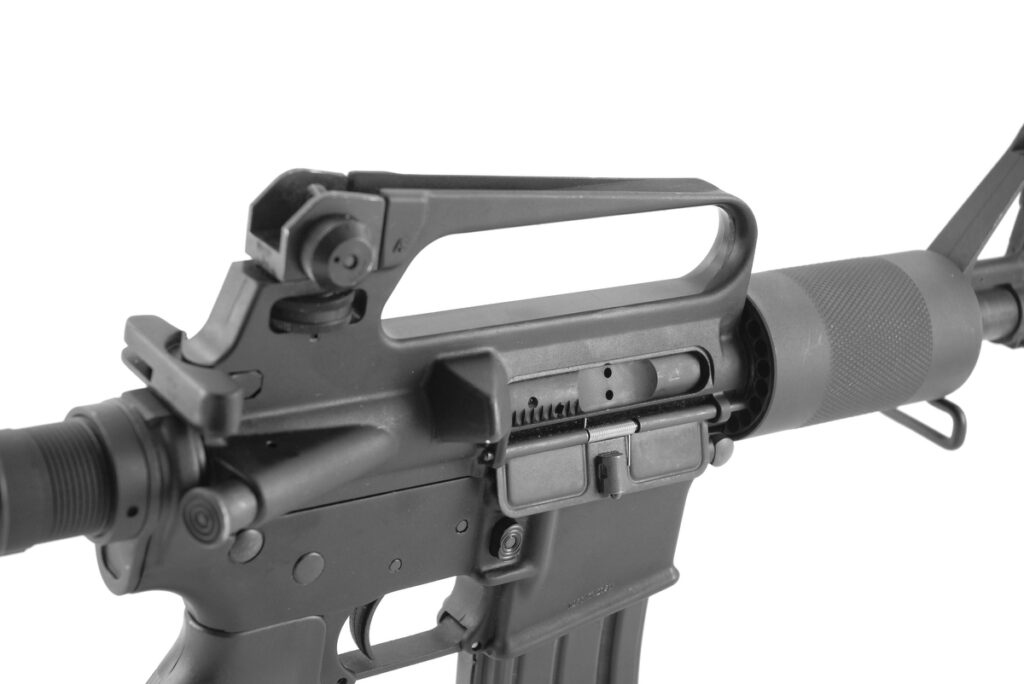
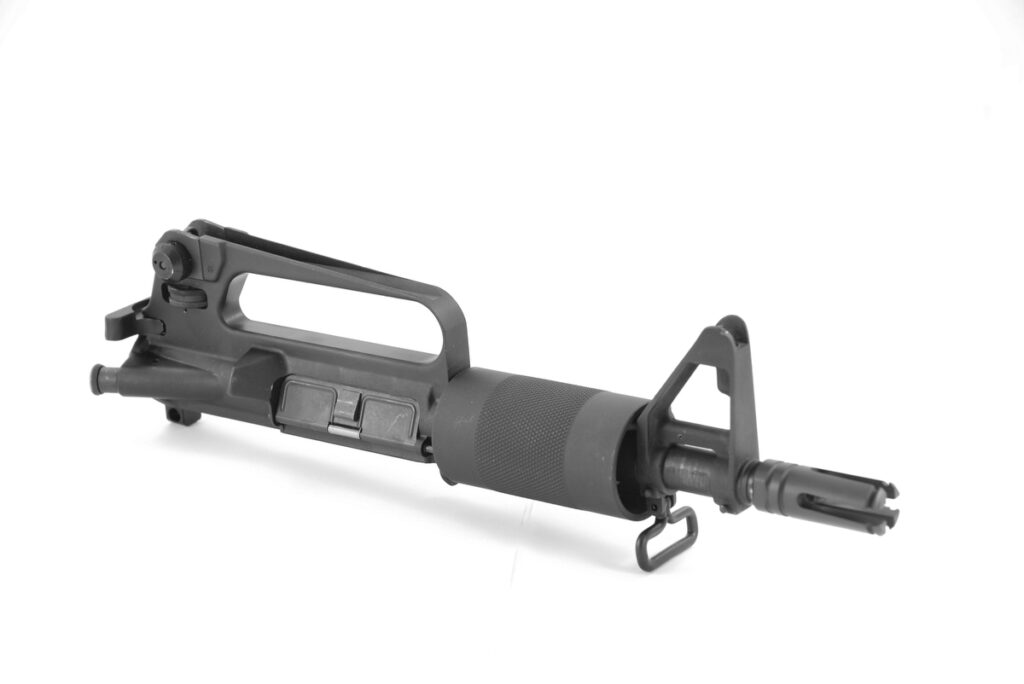
It’s worth noting that Olympic Arms was the first company to introduce a free-float handguard for the AR-15. A new flat-top version would be launched around 2004. It would come with an M4A1-type removable carry handle mounted on a top Picatinny rail and a quad-rail machined aluminum handguard, making it more compatible with the many accessories that were becoming increasingly popular back in the day… and that today we just can’t seem to do without. This last version was in production — or at least available — all the way until Olympic Arms ceased operations.
The carry handle on the Stubby was fixed and featured a familiar, A2 fully adjustable rear sight. The bolt and bolt carrier group were, likewise, standard for an A2 variant, and as such the Stubby came with a standard recoil buffer, buffer tube, and six-position collapsing stock. Manufactured out of black polymer, the stock of the Stubby was more akin in design to that of the M16A1 carbine, M733, or early the Colt Commando (XM177), but all the standard A2 features were otherwise there (including a brass deflector in front of the forward assist and some major fencing around the magazine catch.)
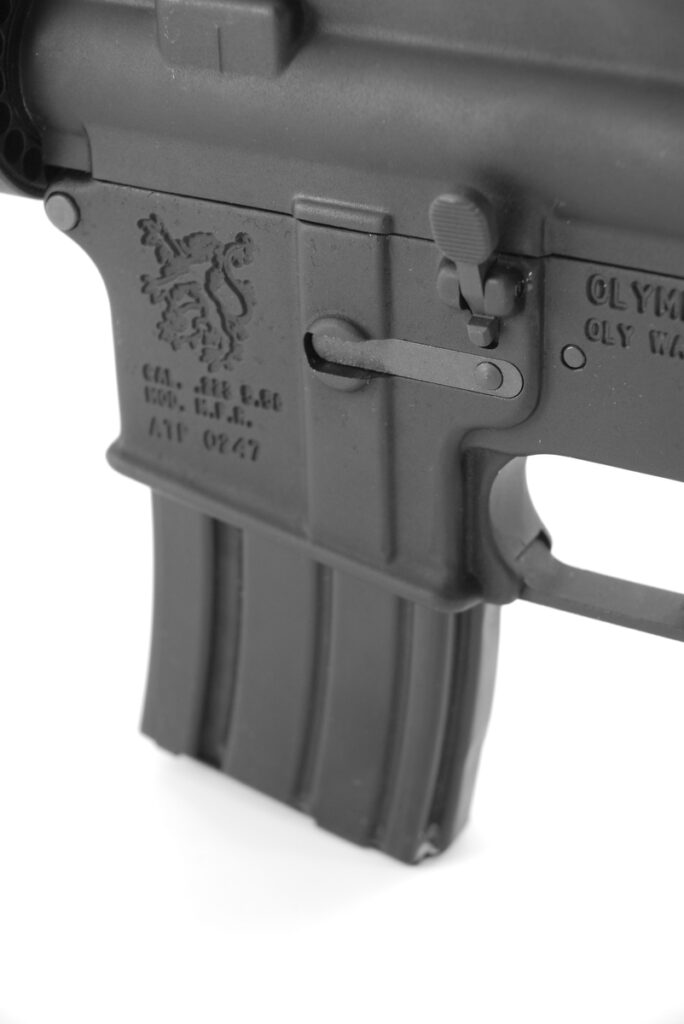
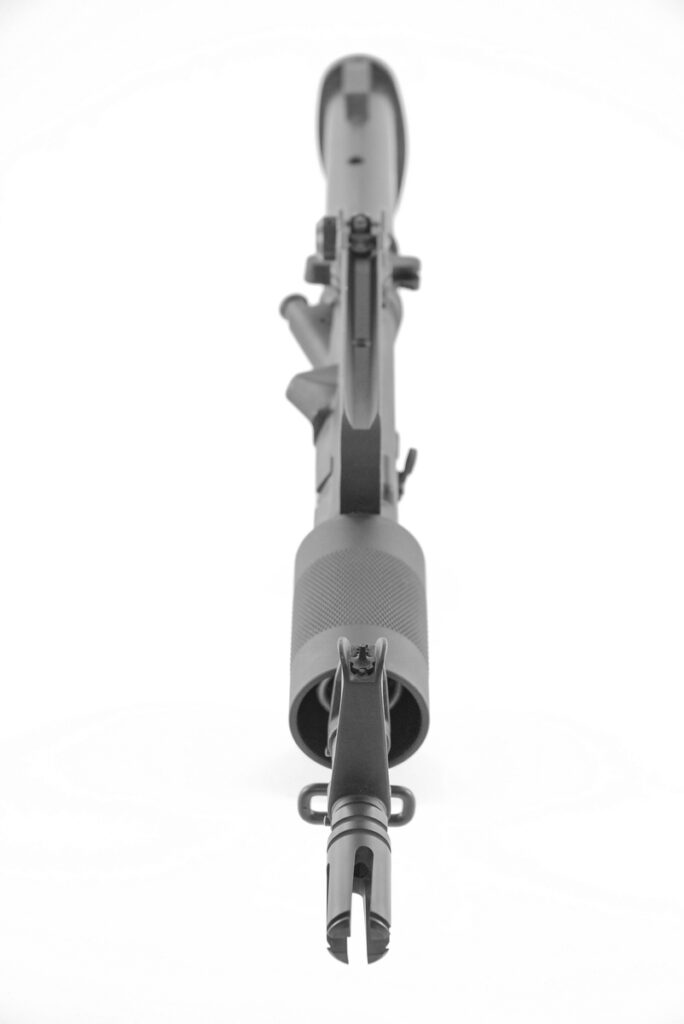
Of course, such a small carbine (barely 20 inches long with the stock collapsed) would suffer severe overgassing problems and timing issues without a properly tuned gas system. Olympic Arms went solved this problem with a pigtail gas tube: essentially a carbine-length gas tube shortened to PDW length by wrapping it in at least two loops around the barrel. The length that the gas has to travel to reach the gas key and push the bolt back is the same as on an 11.5-inch or 14.5-inch carbine, ideally reducing pressures to levels that guarantee sufficient reliability.
From direct experience, and experience of other users, that’s actually easier said than done. Firing a 5.56mm firearm with a 6.5-inch barrel is truly brutal in terms of concussion and muzzle blast, even outdoors, becoming particularly uncomfortable for the shooter after just a few rounds in rapid fire. Shooting it in low-light conditions or indoors will quickly become taxing to the shooter’s eyes and ears. Owners of the rare K23Bs in Italy, where this article was written, were quick to nickname it the “portable flashbang dispenser.”
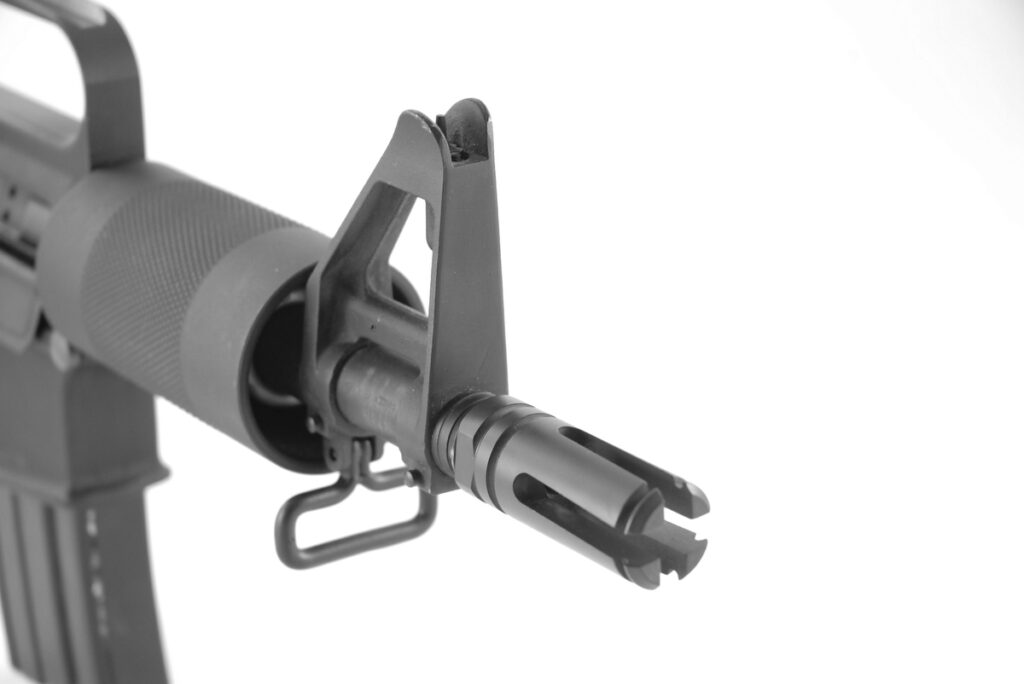
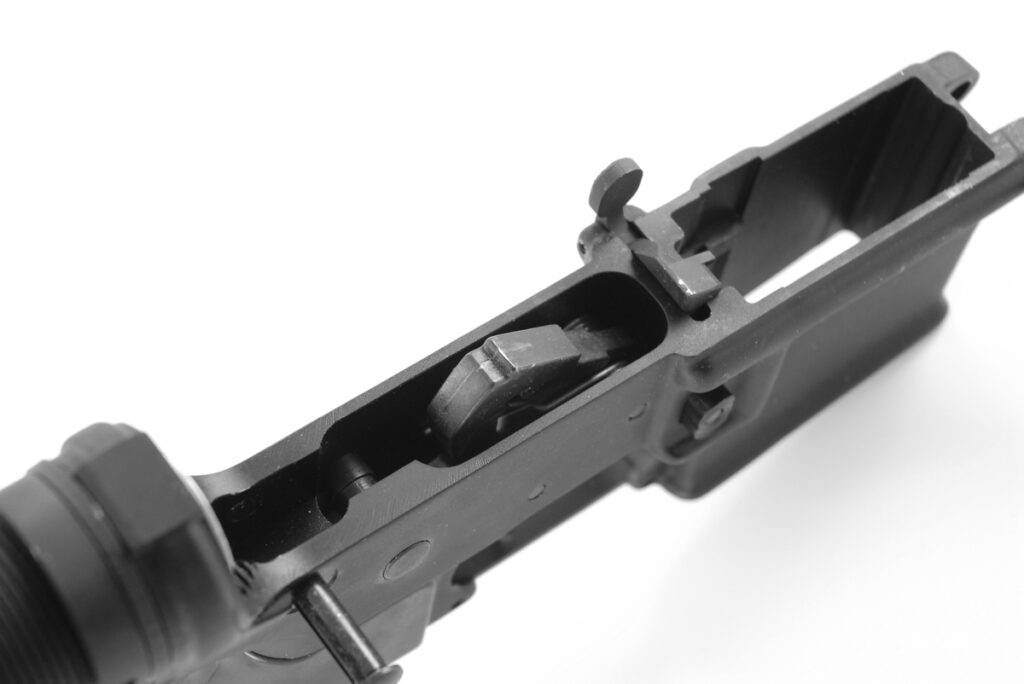
Additionally, such a short barrel does not do a proper job at stabilizing ball ammo for engaging targets farther than thirty feet or so away – but that’s par for the course, the K23B was always meant for extreme CQB. Simply put, the Stubby barrel is just too short, not allowing enough time for the propellant to burn properly and for gases to reach optimal pressure levels. Trying to hit anything at 50 meters, or approximately 55 yards, is essentially a coin toss.
Finally, the pigtail gas tube is an excellent solution that reduces recoil in semi-automatic rifles and the cyclic rate of fully-automatic rifles when the barrel is at least 11.5 inches long… but on a 6.5-inch barrel, the levels of torque can easily become too high for the gas tube to bear. As such, the most commonly reported issue with the K23B is the rupture of the retaining pin, causing the gas tube to come out of the gas block and make the gun completely useless until it could be repaired.
A system such as the TwinTube, patented by Tim LaFrance for his M16K, would have been a better solution. But then again, back when the K23B came out, Olympic Arms was focusing on bufferless AR designs, and their first SBR had been such a design, with the K23B being more of an afterthought for compatibility with pre-existing M16 lowers. Something’s always gotta give.
AN OBJECT OF DESIRE
It’s quite clear that the Stubby was never a key product for Olympic Arms, but more like a footnote in their MIL/LE catalog; a version for the U.S. civilian market, dubbed the K23P and featuring a pistol-length recoil buffer and buffer tube, came to be without much success at a time when arm braces were still a long time from appearing. However, there is at least one place where the K23B has risen to an almost cult status among shooters and firearms enthusiasts: Italy. And that’s where we found the sample pictured in this article, at the Armeria Red Point gun store in Ostia, just outside of Rome.
The Stubby was approved for import and distribution on the Italian civilian market in March 2001, and it is considered a handgun by Italian law, which does not distinguish pistols from rifles by the presence of components like a buttstock or the intended shooting stance, but rather by the overall length vs. barrel length ratio (“intended to be fired from the shoulder” isn’t a thing, here.)

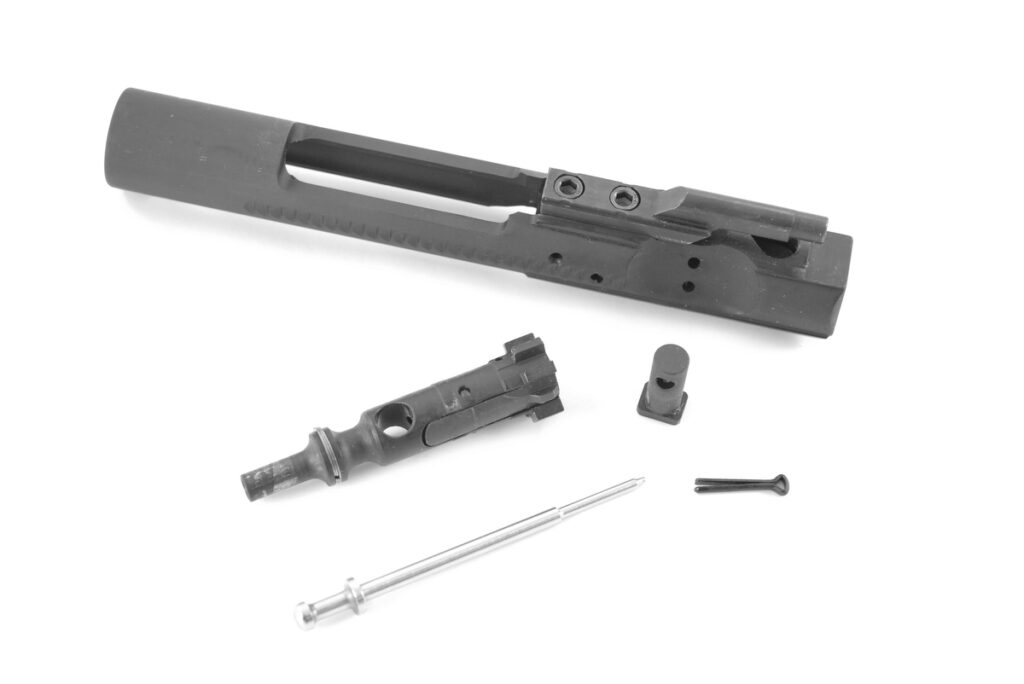
The Italian gun laws have been significantly improved from the year 2011 onwards, with some hiccups following the 2015 wave of terror attacks in Europe. However, back in 2001, the law (passed in 1975) assigned oversight on the Italian civilian firearm market to a central commission composed of “experts” (mostly from the military and law enforcement) with regulatory powers similar to that of the ATF in the United States and full freedom of interpretation as of what constituted a “common” firearm and what was a banned “weapon of war”, albeit somewhat tied to the National Proofing House.
The history of such a commission would warrant an article on its own. But, right now it’s sufficient to say that if it was for the mindset of the members of such commission (dissolved in 2011), the Olympic Arms Stubby would have never made it to the Italian market. As the (quite reliable) rumors have it, however, politicians entered the chat, or to be more specific, one politician, very prominent in Italy and extremely controversial, who held the office of Prime Minister four times from 1994 to 2011.
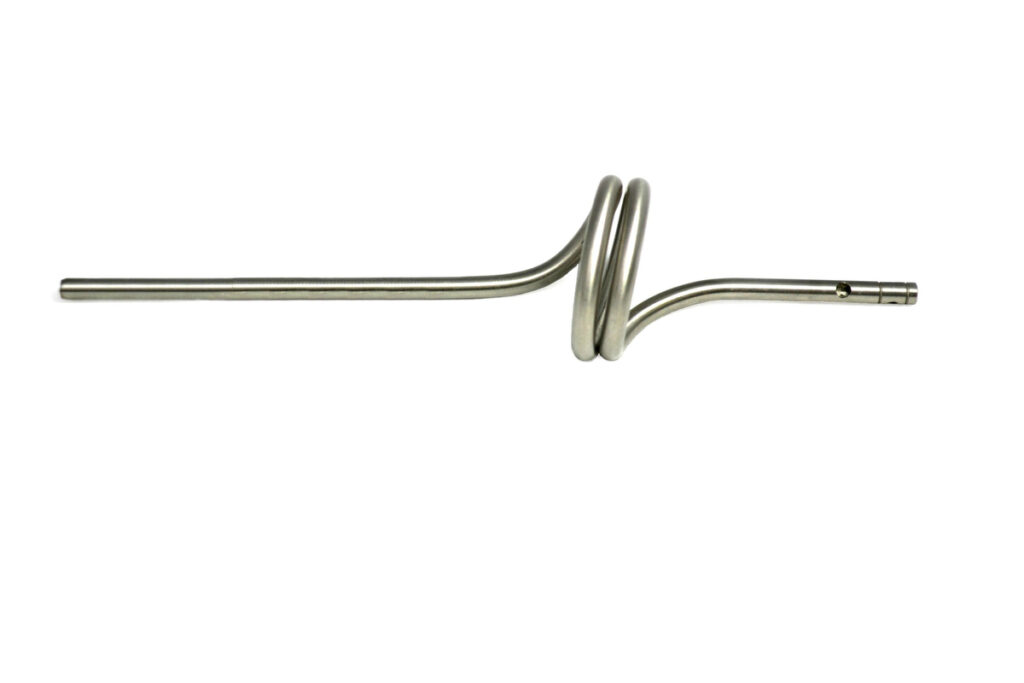
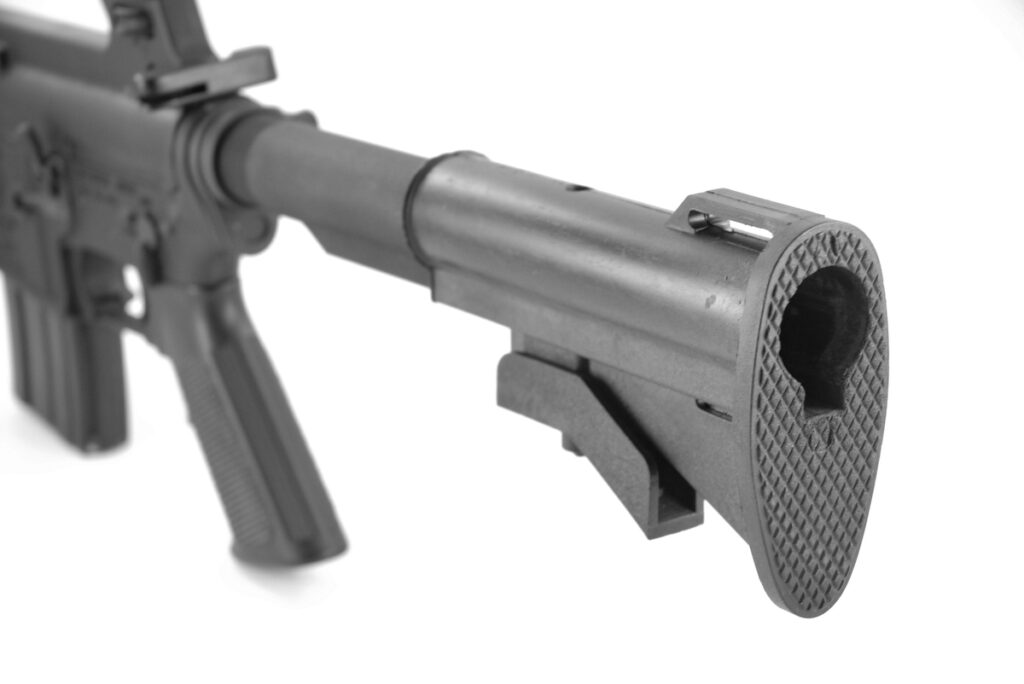
This specific politician, who passed away in 2023, relied on his personal private security detail even when he was Prime Minister and would have had the right to a state security detail; as such, he wanted his private security to have the closest thing available to the Colt Commando, Heckler & Koch MP5 (later MP7), and a G36C that were standard for that kind of close protection duties in Europe.
The Italian importer for Olympic Arms – the now long defunct ATP (Action Tactical Products), headquartered in the northern town of Lesa – imported an unknown “minimum quantity order” of K23Bs, anywhere between ten and twenty samples, almost all of those immediately purchased privately by the personal bodyguards of the aforementioned politician, the others all sold on the civilian market and becoming the first “super-short” AR-15 on sale in the country. Many others would follow.
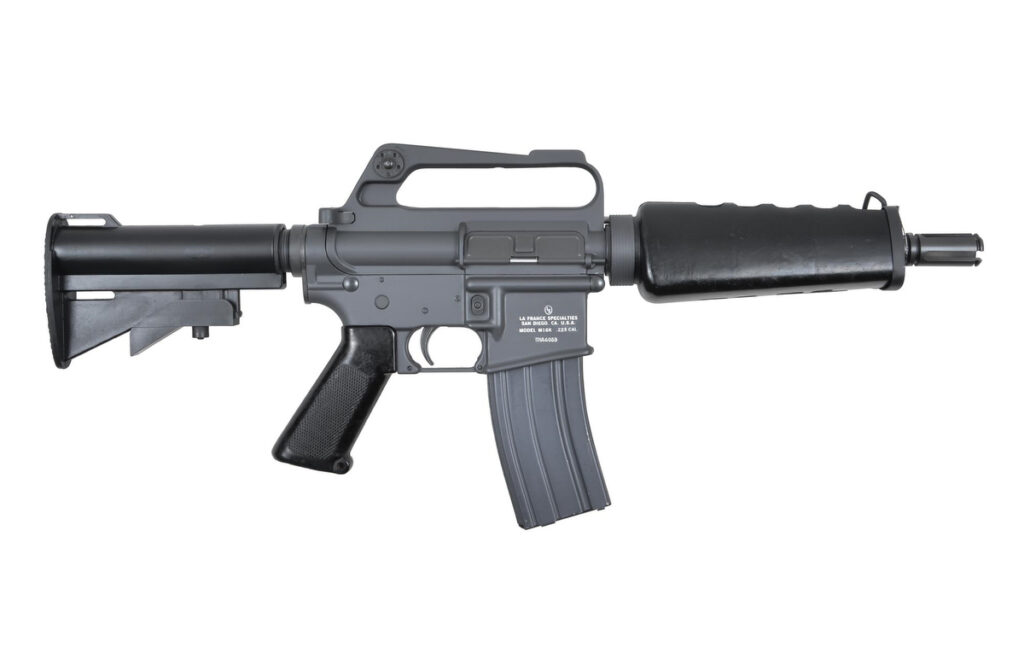
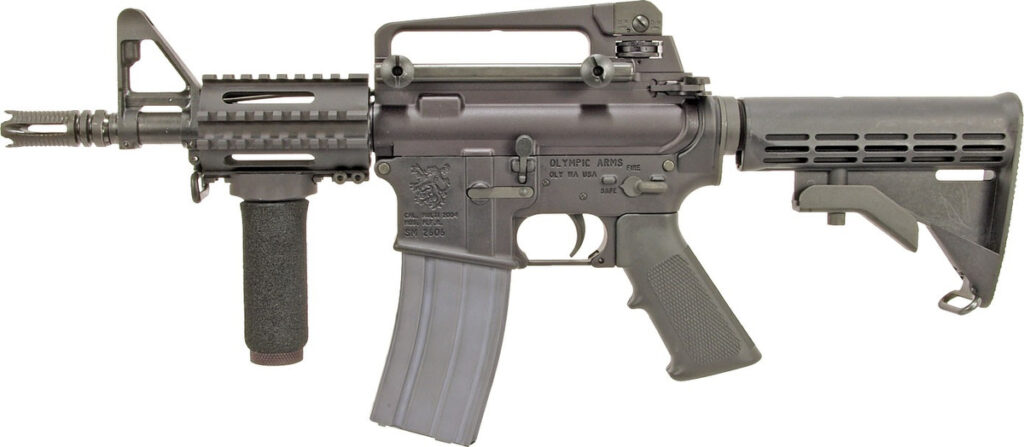
Back in the day, the Stubby was marketed in Italy chiefly towards private security guards – particularly those employed in cash-in-transit duties – but the extremly high price made it largely unattainable on a security guard paycheck, and all samples ended up in the ownership of private collectors with extremely deep pockets. Even nowadays, on the Italian second-hand gun market, the Stubby does not command any less than 3,800 euros, or just over $4,000 U.S. dollars.
Guaranteed, they’ll all be in essentially mint, as-new condition, but with the high number of better alternatives currently available to Italian shooters, including locally made models, you would need to see the K23B Stubby as a grail gun to spend so much money on one.
TECHNICAL SPECIFICATIONS
| Manufacturer | Olympic Arms, Inc. – Olympia, WA (USA) |
| Model | K23B “Stubby” |
| Type | Short-barrel rifle |
| Caliber | 5.56×45mm NATO |
| Action | Semi-automatic, gas-operated, direct impingement |
| Safety | Manual |
| Capacity | AR-15-style magazines (STANAG 4179) of various capacities |
| Sight systems | A2 type front post, A2 adjustable rear |
| Barrel length | 6.5-in., 6 grooves, RH |
| Total length | 20-in. (stock collapsed) |
| Weight (empty) | 5.95 lb. |
| Materials | Aluminum, steel, polymer |












